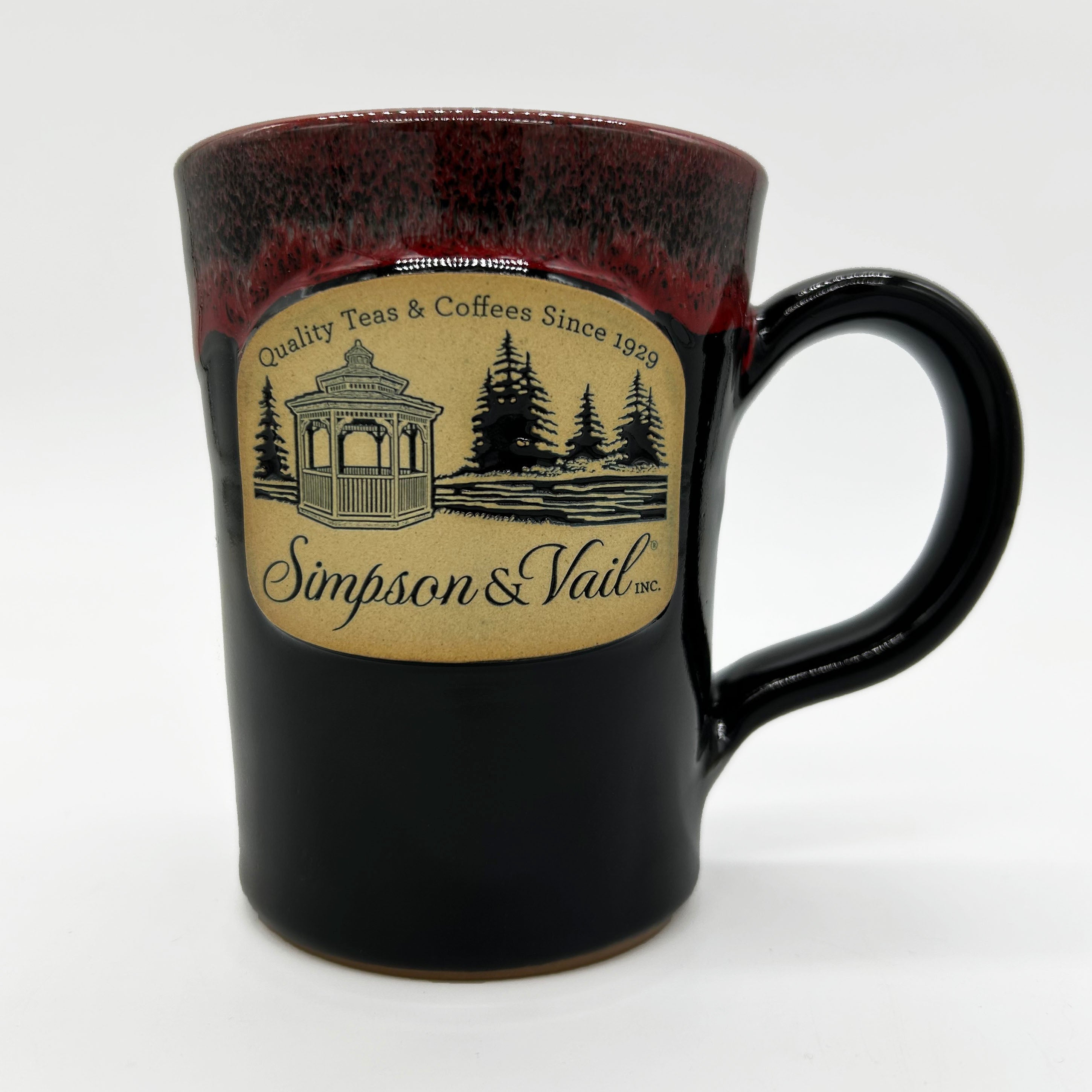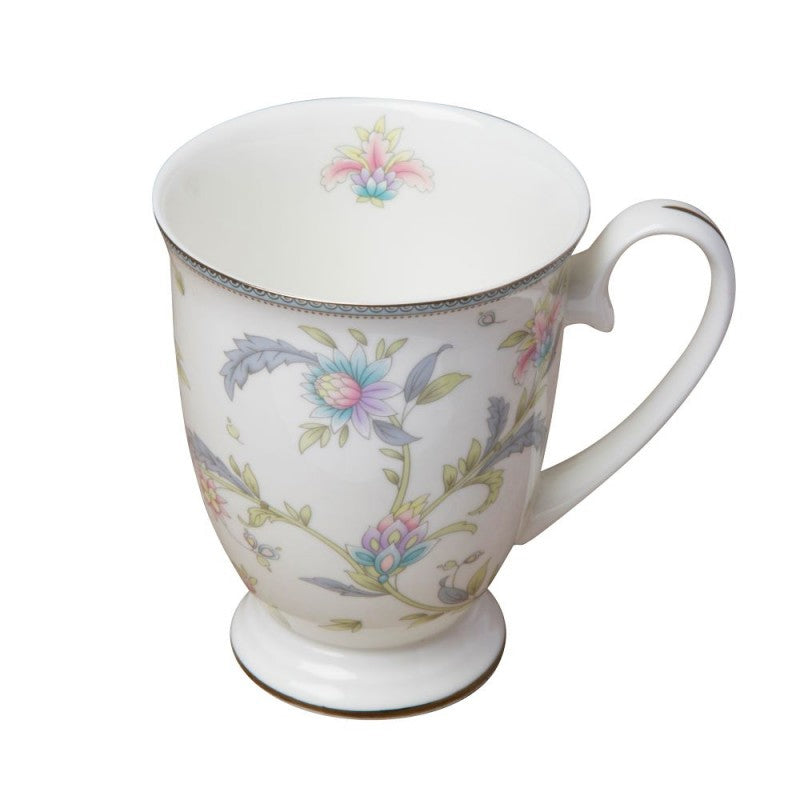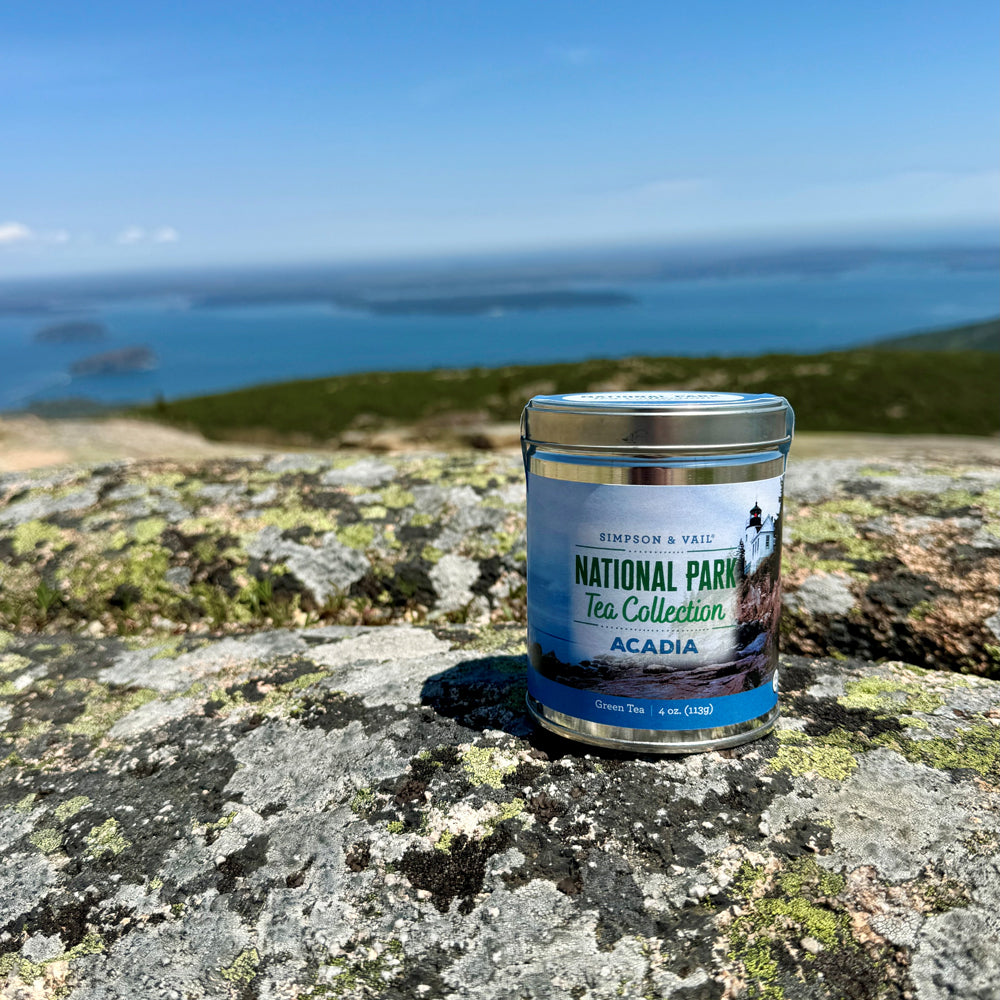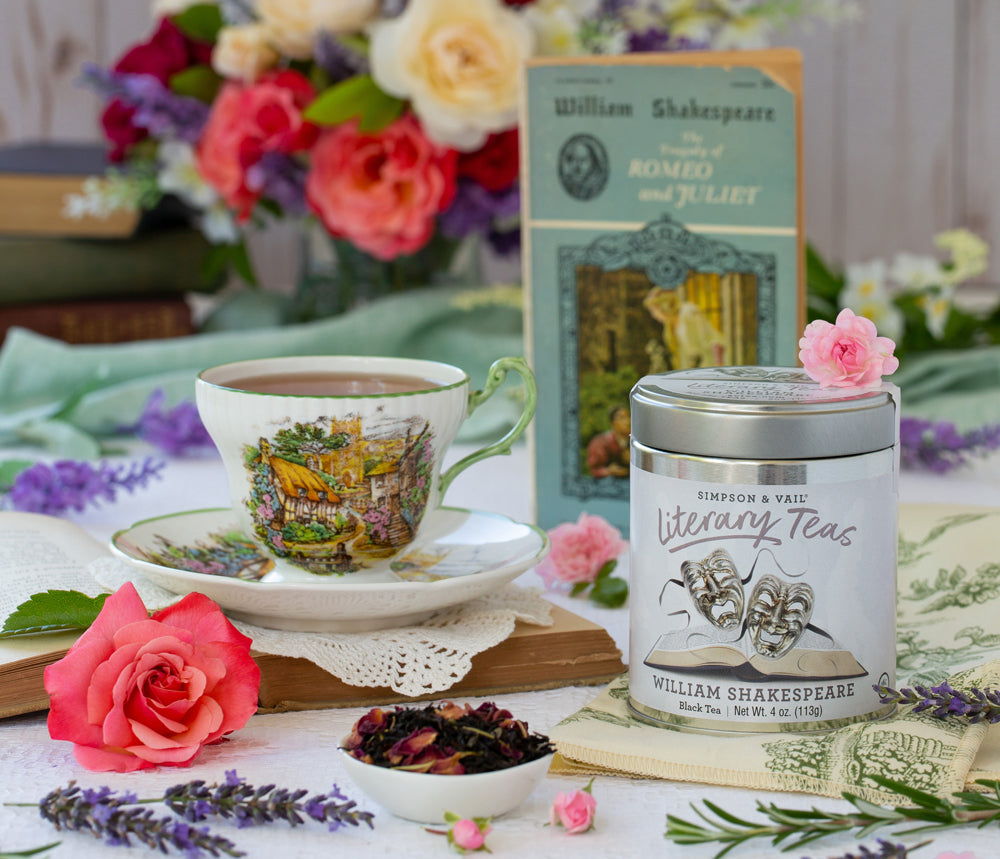Tea Blending: Creating Our Valentine’s Day Blend
Simpson & Vail offers over 300 varieties of teas and tisanes and many of those are blends. Each tea blend had to be invented by someone and most of our flavored ones come from the wonderfully creative mind of Cyndi Harron. Ideas for new blends can come from anywhere. She might be struck with sudden inspiration or she might have to build an idea from scratch. The latter was the case with our new Valentine’s Day blend. This holiday is usually associated with creamy, decadent chocolate and rich, red fruits so when a customer emailed looking for a fruity chocolate tea, Cyndi went to work creating one.
“When I first made the Valentine’s Day blend I was torn between rose and fruit,” Cyndi told me. “The customer had requested a chocolate berry (other than strawberry) but I wasn’t sure if this was the direction to go in for our main Valentine’s Blend.” She started by trying chocolate black tea with added rose petals. This blend turned out okay but it wasn’t spectacular. “I suppose I could have tweaked it to make it work, but the berry flavors were so much more delicious that I never introduced the chocolate and rose type to the family.” She then tried mixing our chocolate black tea with blackberry, raspberry, gooseberry, cherry, pomegranate, tropical fruit, and cranberry flavors. “The gooseberry, cherry, and cranberry overwhelmed the chocolate and didn’t integrate well, while the tropical fruit flavor totally disappeared behind the stronger chocolate flavor.” However, “the blackberry, raspberry, and pomegranate were perfect flavors to accompany the chocolate.” Of those three, the pomegranate was the clear favorite so that blend was the only one Cyndi presented to the family for tasting.
The ratio of ingredients has a huge effect on the final outcome of the tea, so Cyndi spends most of her time making and testing slight variations. She will come up with a couple blends that she likes and then taste them with the whole family. The feedback from that first tasting is crucial because it guides the direction for the blend. Sometimes flavors that were loved the first time are not loved the second time, so we always make sure to have at least three different tasting days before approving a blend. Fortunately, the Valentine’s blend was an easy one and, once Cyndi had decided on the pomegranate and chocolate flavors, the tasting process went quickly. “I honestly don’t remember making too many adjustments to the original blend that I created; this one was pretty easy.” The Sugar Plum Fairy (another new 2015 holiday tea), on the other hand, was extremely challenging. Cyndi had to try three different plum flavored variations and spend six months experimenting and making multiple samples for everyone to try before she finally got the blend everyone could agree lived up to the name and their expectations.
 Taking into account all of the senses is important when creating a blend. People see the teas first and then smell them before finally tasting them. We have found that having colorful or attractive teas oftentimes influences how people feel about the blend. If the visual appeal isn’t there it may cloud a person’s impression of the blend and they might pass on trying a particular tea. When choosing ingredients, we try to choose flowers, fruits, and leaves that accent the flavors in the blend. In the case of the Valentine’s Day blend, that meant including raspberry pieces and cacao nibs. Raspberry pieces don’t impart any flavor so we use them for their cheerful red color that looks delicious in the tea. When we can, we like to have the brewed tea reflect something of what it will taste like, although this isn’t always possible. Blends that are primarily comprised of black teas brew to an amber, brown cup color, green teas and green rooibos brew up to a pale yellow color, red rooibos brews up to a deep reddish cup. Hibiscus flowers add color to tea and tisane blends that ranges from pink to deep red depending on the quantity used. The hibiscus color can be enjoyed mostly in green rooibos like our Sugar Plum Fairy, green tea like our Pomegranate Acai Yumberry, or white tea blends like our new Strawberry Guava Tropical White Tea. The Valentine’s Day blend has a black tea base so it brews to a mostly amber cup with the hibiscus petals adding a slight reddish hue.
Taking into account all of the senses is important when creating a blend. People see the teas first and then smell them before finally tasting them. We have found that having colorful or attractive teas oftentimes influences how people feel about the blend. If the visual appeal isn’t there it may cloud a person’s impression of the blend and they might pass on trying a particular tea. When choosing ingredients, we try to choose flowers, fruits, and leaves that accent the flavors in the blend. In the case of the Valentine’s Day blend, that meant including raspberry pieces and cacao nibs. Raspberry pieces don’t impart any flavor so we use them for their cheerful red color that looks delicious in the tea. When we can, we like to have the brewed tea reflect something of what it will taste like, although this isn’t always possible. Blends that are primarily comprised of black teas brew to an amber, brown cup color, green teas and green rooibos brew up to a pale yellow color, red rooibos brews up to a deep reddish cup. Hibiscus flowers add color to tea and tisane blends that ranges from pink to deep red depending on the quantity used. The hibiscus color can be enjoyed mostly in green rooibos like our Sugar Plum Fairy, green tea like our Pomegranate Acai Yumberry, or white tea blends like our new Strawberry Guava Tropical White Tea. The Valentine’s Day blend has a black tea base so it brews to a mostly amber cup with the hibiscus petals adding a slight reddish hue.
If the tea doesn’t smell right, especially if it doesn’t smell like what you would expect from the name, that may affect a person’s judgement as well. The tea’s aroma is primarily determined by the flavoring. The fruits impart no fruity aromas and neither do the hibiscus petals, cornflowers, or most of the other flowers we use. There is definitely an aroma from the rose petals, lavender buds, and lemon myrtle, to name a few, but mostly the work of the smell is handled by the flavoring.
 Finally, the taste. Even though it comes last, it is the most important aspect. This is, after all, a beverage that is meant to be enjoyed. If the tea looks great and smells great but doesn’t taste great, it isn’t worth brewing. As you would expect, the flavorings play a pivotal role in this aspect. Our Valentine’s Day blend uses chocolate and natural pomegranate flavorings. The cacao nibs add a richer depth of chocolate flavor and the hibiscus flowers in the blend add a touch of tartness that complements the pomegranate flavor.
Finally, the taste. Even though it comes last, it is the most important aspect. This is, after all, a beverage that is meant to be enjoyed. If the tea looks great and smells great but doesn’t taste great, it isn’t worth brewing. As you would expect, the flavorings play a pivotal role in this aspect. Our Valentine’s Day blend uses chocolate and natural pomegranate flavorings. The cacao nibs add a richer depth of chocolate flavor and the hibiscus flowers in the blend add a touch of tartness that complements the pomegranate flavor.
Crafting a new tea blend is an intricate and time-consuming process that requires trial and error as well as constant iteration. Cyndi and the rest of the Harron family have had plenty of experience and that expertise really shows in the many delicious blends that Simpson & Vail offers. The creation of our new Valentine’s Day blend offers a look into the process and illustrates the careful thought that goes into each decision.
(Click here to see a video of Jim blending our Victorian Earl Grey tea)








Leave a comment